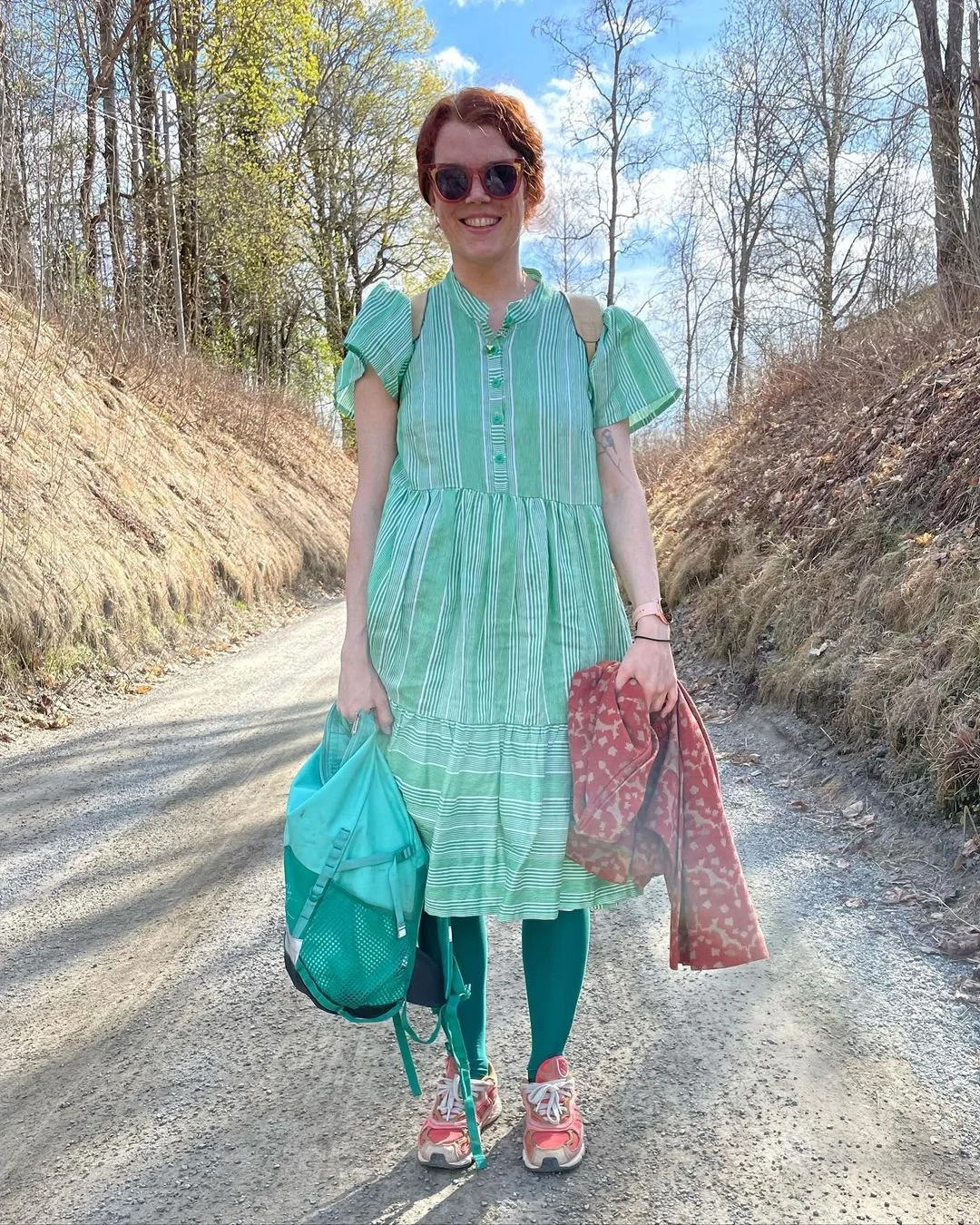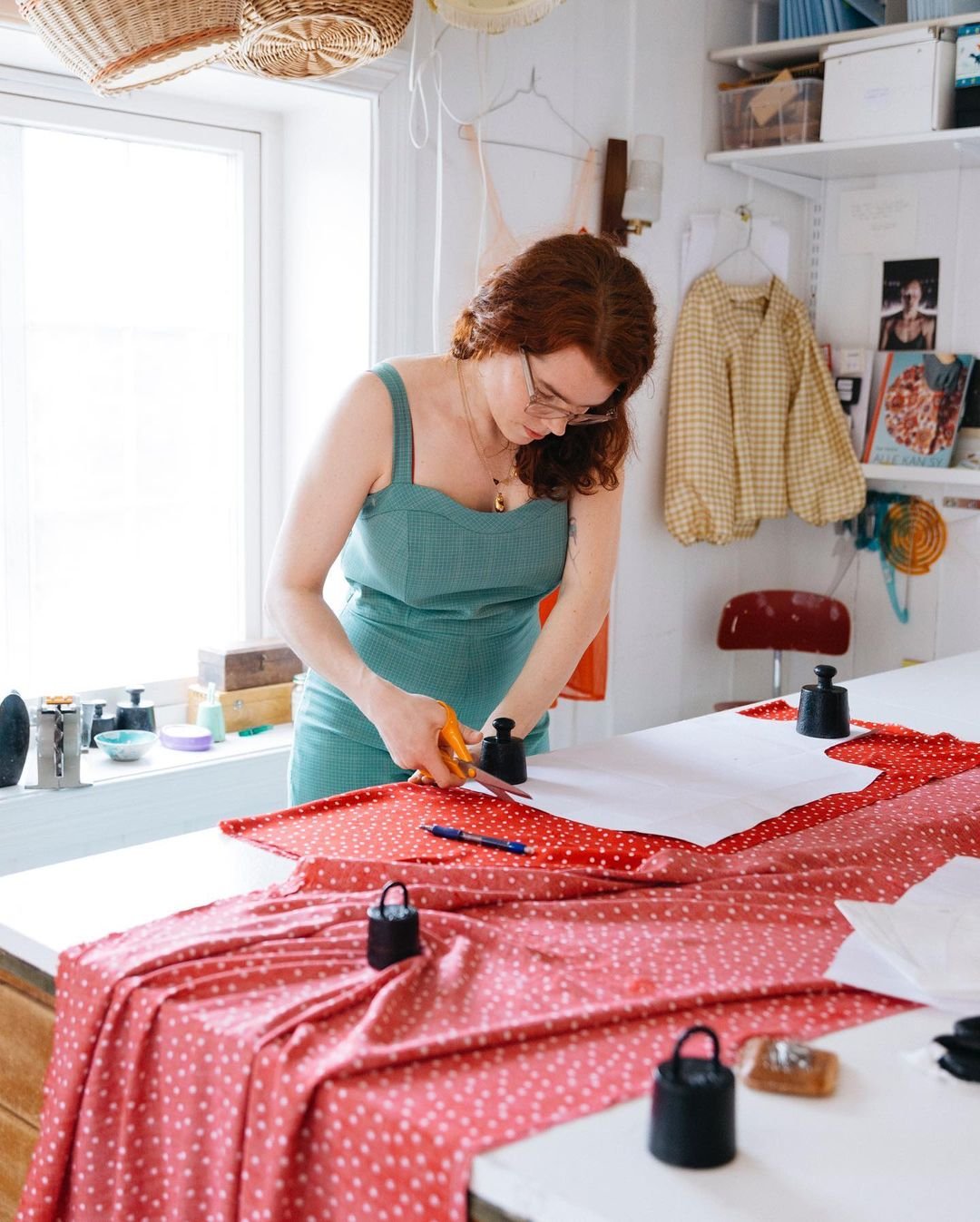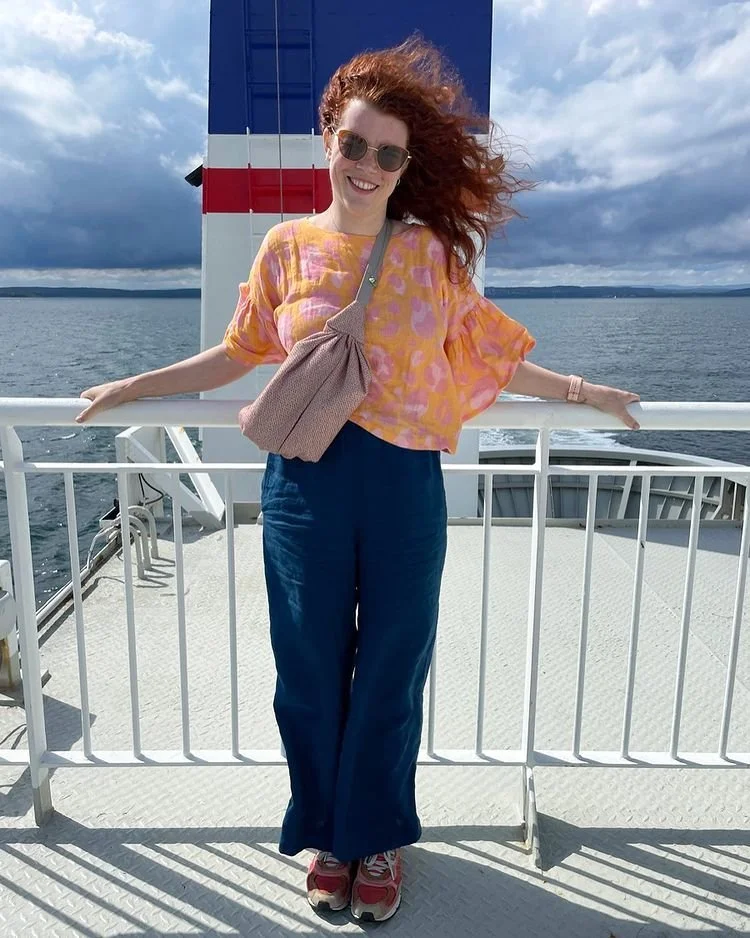INTERVIEW #114 MARI MELILOT
Name: Mari Melilot
Based in: Eidsvoll, Norway
Occupation: Designer, pattern maker, author of sewing books, sewing teacher and podcast co-host.
Instagram: @marimelilot and @melilotpatterns
Hi Mari! We're so happy to welcome you to A Sustainable Closet! Tell us about yourself.
Thank you! I’m Mari Melilot, 36 years old from Eidsvoll, Norway. I’m educated in fashion design and I work as a sewing pattern maker and designer, illustrator, sewing teacher and author of sewing books. I run the company Melilot (@melilotpatterns ) with a team of three people, plus myself. I also co-host a Norwegian sewing podcast (@sommelig.podkast ).
You're certainly a Jill of all trades, tell us more about your occupations and how a work week can look.
My weeks can vary a lot, as I work project-based and have a lot of different roles in my job, I tend to jump a lot between tasks. I try to work short days when my kids are at school, but my head is working constantly with ideas, and I have little control over that. As long as I am present, I try not to let it stress me, but just accept the flow of thoughts.
I prefer to work alone in my house or with my little team, but travelling for talks and sewing classes is also a big part of my work life. I try to balance it out with family life to spend as little time away as possible.
Are you selling your masterpieces?
I sell my sewing patterns and books, so people can make their own versions of my designs. I sew very little for sale because I don’t like being told what to do and I’m really bad at pricing my work. I love working with fitting on bodies, but other people’s demands can take away my motivation for me, and that doesn’t feel right.
Where do you find inspiration?
Everywhere. Instagram, people in the streets, nature, a small detail I see, colours, art. I have a very busy head, so I spend a lot of time just thinking. Some inspiration is very direct, but a lot is based on a tiny thing that evolves into something completely different after a little while. I never actually know where it comes from, but I do get very influenced by everything I see.
What is your relationship with clothes, how do you consume your clothes?
I like to wear clothes that I have built a relationship with, or that have had a life before. As my job is to make clothes, some new garments get added every year when I make prototypes for my patterns, but I do try to wear my clothes as much as possible and mend or alter them when they need care or my body changes. I also like to find new owners for the items that don't get as much wear as they should, instead of giving them to the thrift store. In general, I want to be surrounded by objects that tell a story and that you can’t just find at any store.
Favourite stores or brands to shop from?
I buy very few clothes, but some of the garments I’ve bought and loved have been from COS or second-hand shops. I prefer natural materials and high-quality fabrics, and most shops with the standard I prefer are out of my price range. I love the treasure hunting part of thrifting, and it’s possible to get really good clothes for less money. The detailing in vintage clothes is also something you just can’t find in RTW.
What do you think about the fashion industry in general?
It makes me worried. In my first year as a fashion student in 2006, I thought “what am I doing, this industry is just not right”. Now, many years later, people seem much more aware in general, and that’s a great thing, but there is so much greenwashing and we actually need a big change. I have big hopes for the new generation of designers and consumers.
What can one do that seeks to create a more sustainable closet?
Start by using what you have and mend as much as possible. It might help to remove some items from the closet, to get a better overview of your favourite clothes. Try to think that your closet should be like a shop you want to visit again and again. Your wardrobe shouldn’t be a museum of your former self. Also, be mindful of what materials you choose when buying clothes. Natural materials like linen and wool can last a long time and feel comfortable. Always check second-hand before buying new when you need something.
Describe what fashion is for you, in three words:
Playful, personal and timeless





